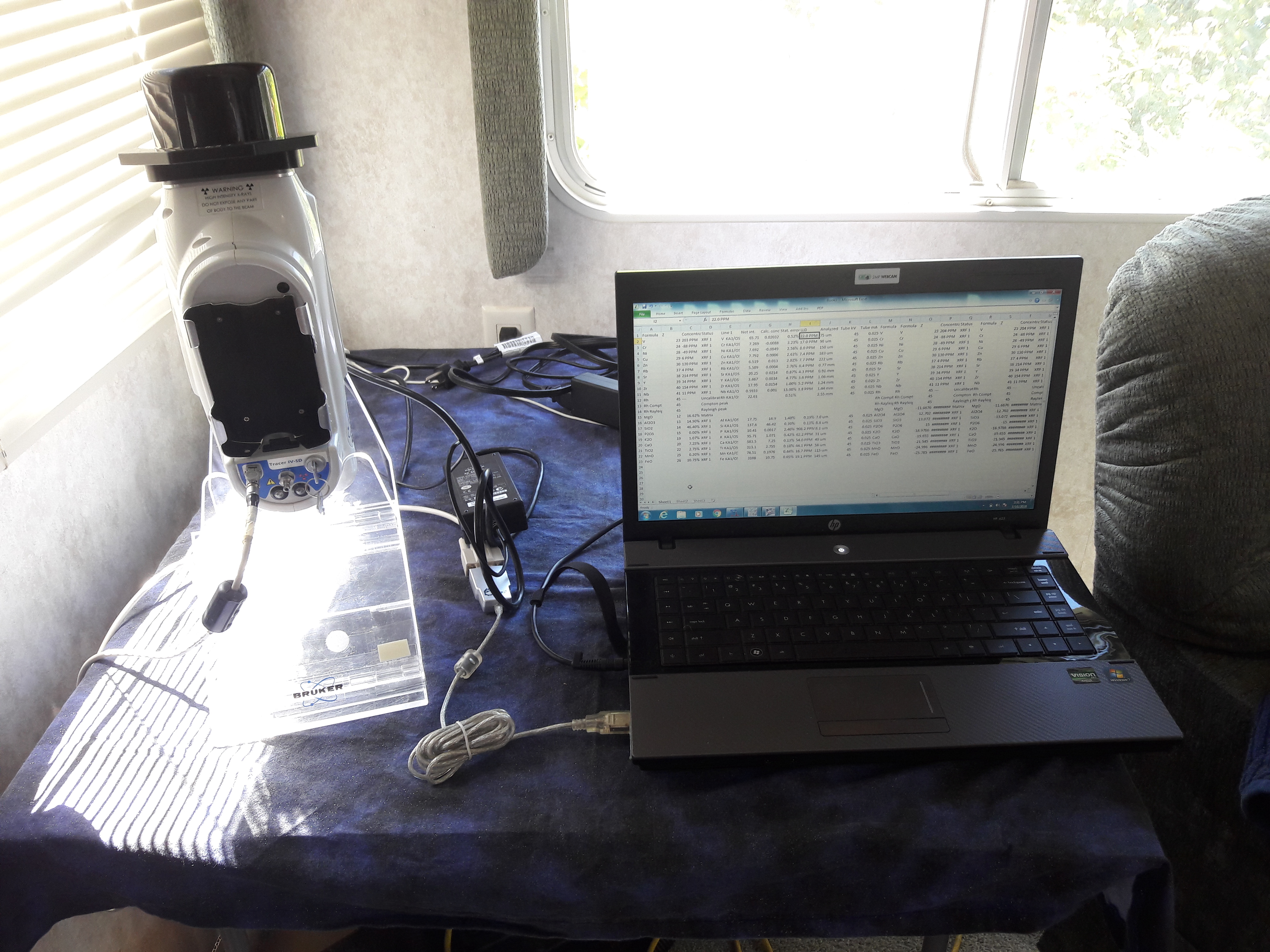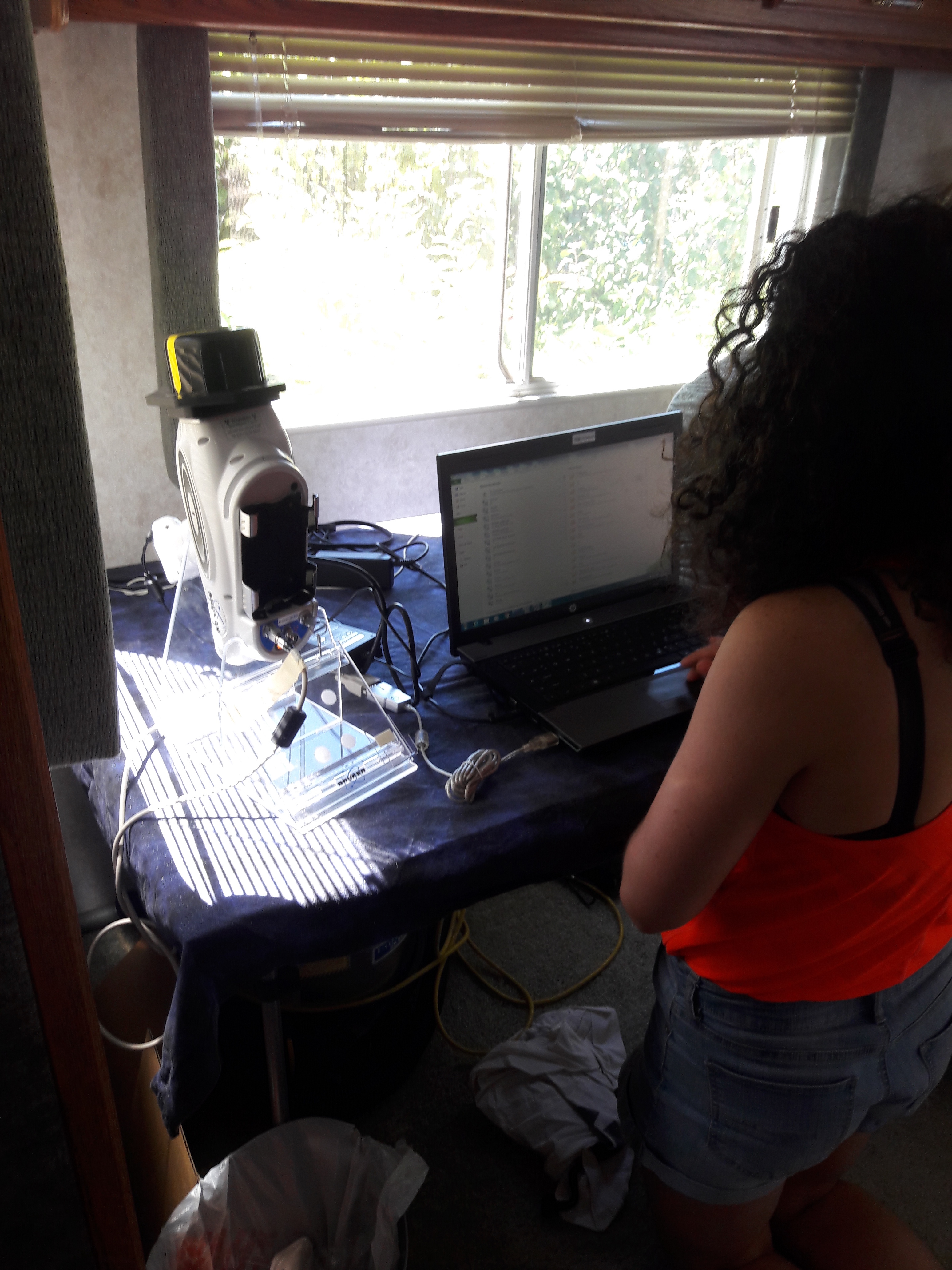This morning we reviewed the Columbia River Basalt stratigraphy of The Dalles area, and devoted the early afternoon to unlocking the secrets of a portable XRF: the Bruker Tracer IV-SD (the link is to a newer model than the one we are using).
(Below) Image of the XRF machine to the left and computer that reads the elemental compositions reported during the measurement process.

What is an XRF you ask? XRF stands for X-Ray Fluorescence and is an analytical technique that we can use to determine the major, minor and trace elemental composition of a given substance.
We differentiate elements with the Atomic number, a measure of the protons (or positively charged subatomic particles), neutrons (subatomic particles with no charge) and electrons (negatively charged subatomic particles). Protons and Neutrons combine to make the elements and their isotopes. Each isotope has orbitals characterized by specific energies. If a high energy X-ray strikes an electron it can energize the electron, sending it a higher orbital. However, the hole left behind makes the atom of that element unstable, and in response an electron from a higher orbital will fall to fill the hole, releasing a photon. That photon's energy, and therefore wavelength, corresponds to the energy difference between the the two orbitals.
X-ray Fluorescence works by firing X-rays at the substance (element, rock, alloy, etc.). The machine measures the different wavelengths of light that that the substance releases. Each element releases a different wavelength of light, therefore allowing us to use the XRF to determine elemental compositions of each basalt flow we observe in the field.

The sample we tested today is the Rosalia Member of the Wanapum Basalt. The Columbia River Basalts (CRB) are generally well differentiated, members that look similar in hand sample have different elemental compositions. Therefore we use the XRF to identify the different CRB flow stratigraphy that will end up in the final map! Having a solid understanding of the stratigraphy means we can determine where suites of rock meet the generally accepted order or defy their emplacement. In this mapping region (just north of the Columbia River and The Dalles), recognizing these stratigraphic discrepancies in the CRB flows helps us recognize the structure and produce an accurate, detailed map.

Post written by Marina Marcelli, 2018-07-10
